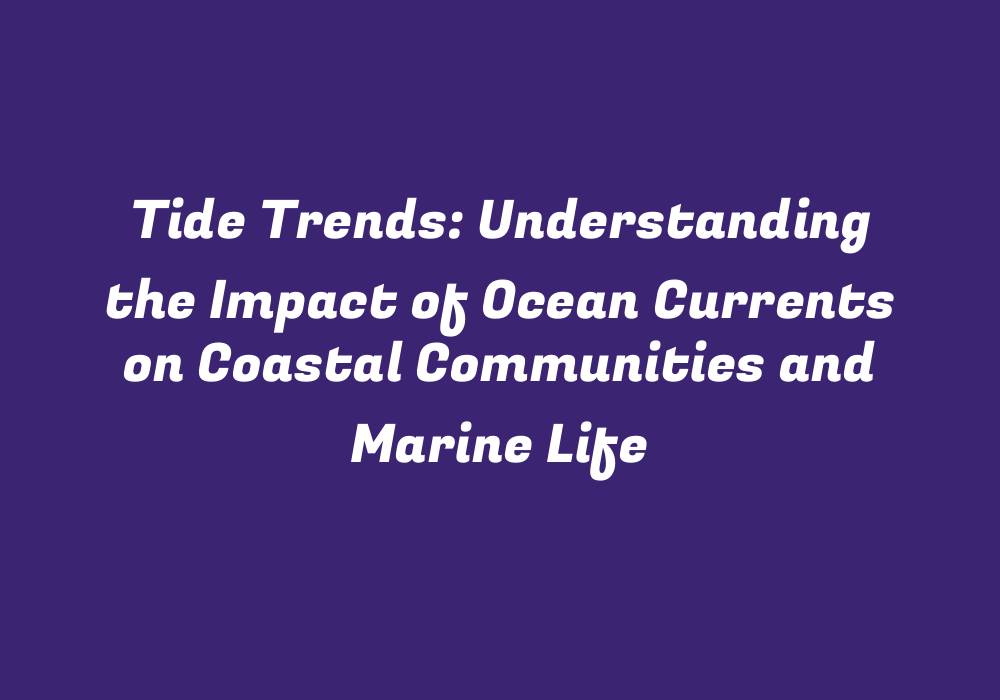Understanding the Impact of Ocean Currents on Coastal Communities and Marine Life
Ocean currents play a significant role in shaping our planet’s climate, influencing weather patterns and regulating global temperatures. Their impact is not limited to just these aspects; ocean currents also have substantial influence on the lives of coastal communities and marine life. These powerful movements affect where and how marine ecosystems develop, as well as impacting human activities near the coast.
Ocean Current Fundamentals
An ocean current is a persistent horizontal movement of water in an ocean or sea. The Earth’s rotation, temperature variations in the atmosphere and water, and interactions with other currents influence these movements. Some currents are quite consistent, such as the Gulf Stream, while others may vary due to seasonal changes, climate events, and local conditions. Despite their differences, they all contribute to the overall circulation of ocean waters.
The Role of Ocean Currents in Coastal Communities
Climate and Weather Patterns: Ocean currents play a critical role in shaping regional climates by affecting temperatures, precipitation levels, wind patterns, and other weather-related factors. These changes can impact agriculture, tourism, and infrastructure within coastal communities.
Fisheries and Food Production: Ocean currents help distribute nutrients and support the growth of various marine species. By influencing where and when certain fish and other seafood are found, they have a direct impact on fishing industries and the livelihoods of coastal communities that depend on these resources for food production.
Coastal Erosion: Ocean currents, particularly strong ones like rip currents or upwellings, can contribute to coastal erosion and sediment movement. This may lead to damage to coastal infrastructure, such as harbors, bridges, and sea walls, requiring ongoing maintenance or even reconstruction.
The Impact on Marine Life
Distribution of Species: Ocean currents play a key role in dispersing marine life across the world’s oceans. They influence where species can thrive and establish habitats, affecting ecosystem diversity and biodiversity. Changes in ocean current patterns or strength may also lead to changes in the distribution of certain species and their populations.
Migration Patterns: Ocean currents can affect the migration paths and timing of many marine animals, such as whales, fish, and birds. These movements are crucial for species’ reproduction, feeding, and survival strategies. Shifts in current patterns may disrupt these processes and lead to disruptions in the balance of ecosystems.
Impact on Coral Reefs: Ocean currents play a critical role in shaping coral reef development and resilience. They transport nutrients, oxygenate water, and support the growth and health of these vital marine habitats, which are home to an abundance of species and provide important services such as shoreline protection.
Conclusion
Ocean currents have a profound influence on both coastal communities and the marine life they support. By understanding how these powerful movements affect regional climates, fisheries, human activities, and marine ecosystems, we can work towards mitigating potential negative impacts and utilizing the positive ones to ensure sustainable growth for all involved.
Further Exploration
To delve deeper into the topic of ocean currents and their impact on coastal communities and marine life, consider exploring the following resources:
1. “The Invisible Power: The Impact of Ocean Currents on Coastal Communities” by Dr. Lida Teneva (2019)
2. “The Ocean’s Invisible Threads: How Understanding Ocean Currents Can Save Us All” by David M. Kennedy (2018)
3. “Oceanography: An Introduction to the Earth’s Dynamic Environment,” 9th Edition by Wiley and Sons, Inc.
4. NOAA’s National Ocean Service website for information on ocean currents and their impacts
